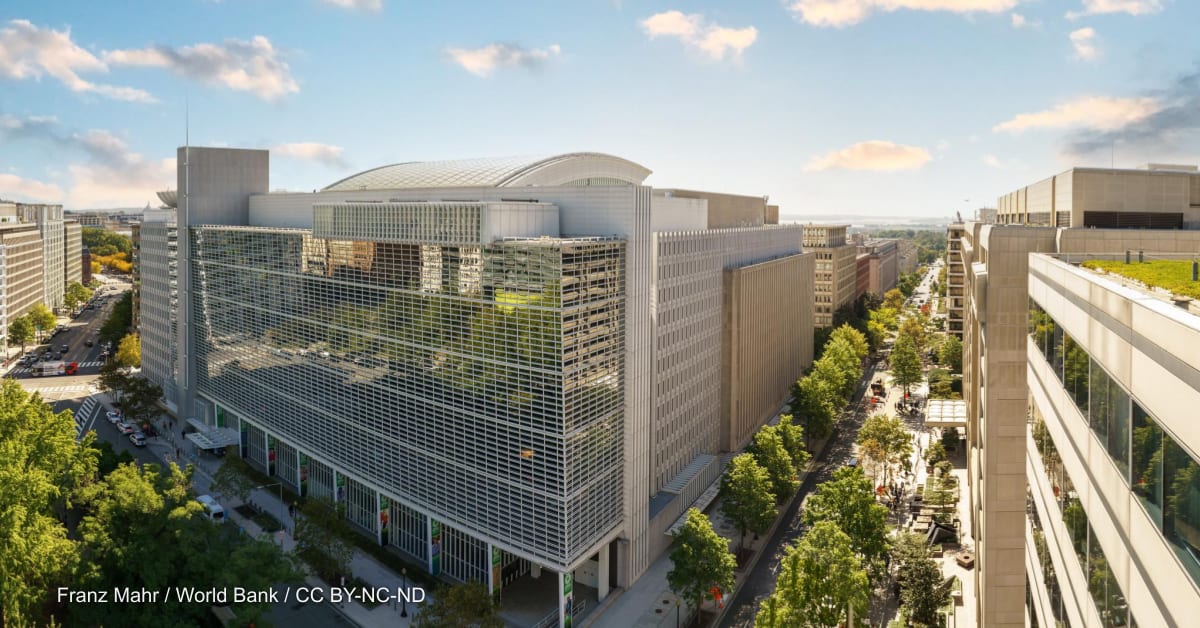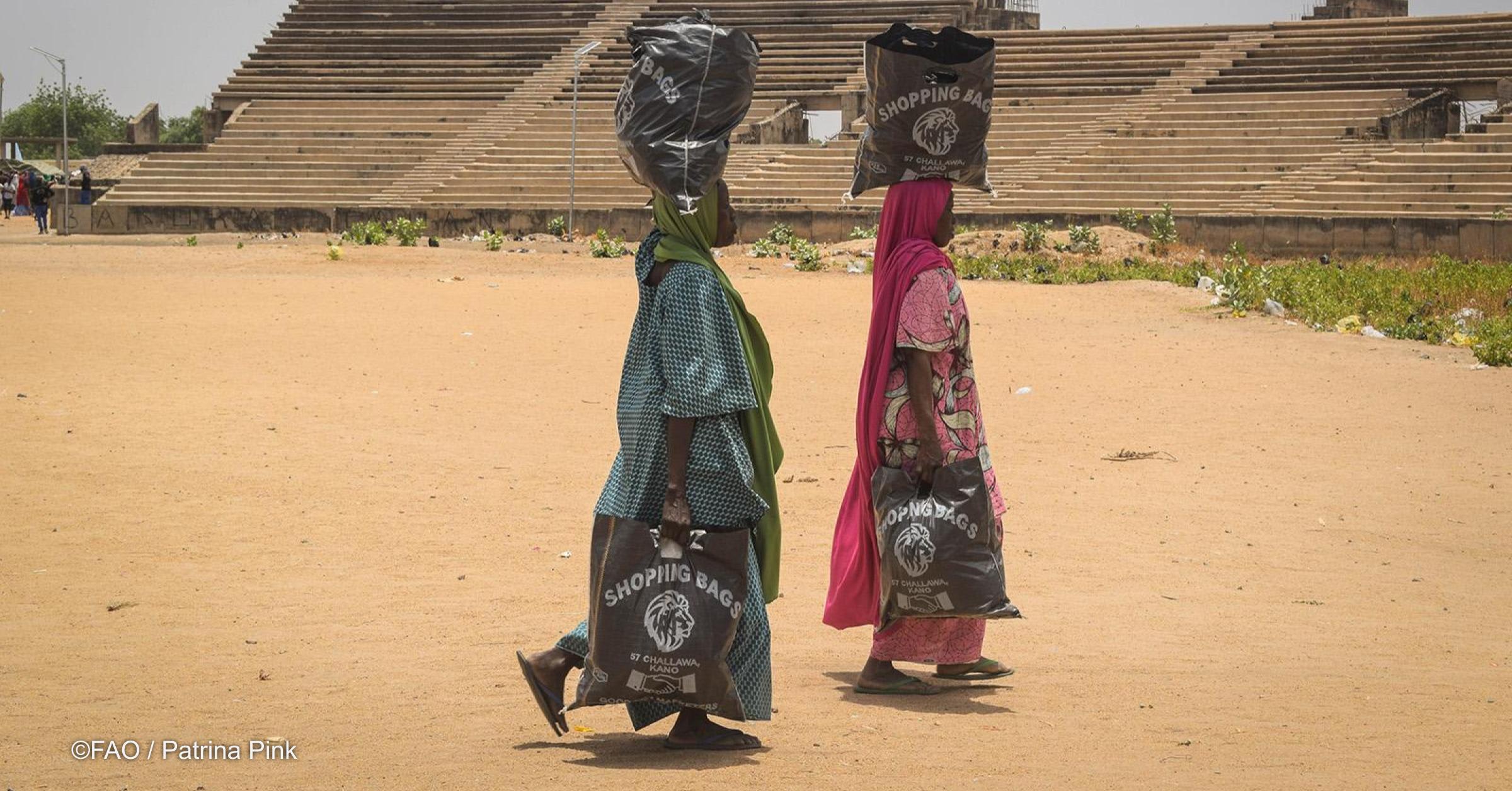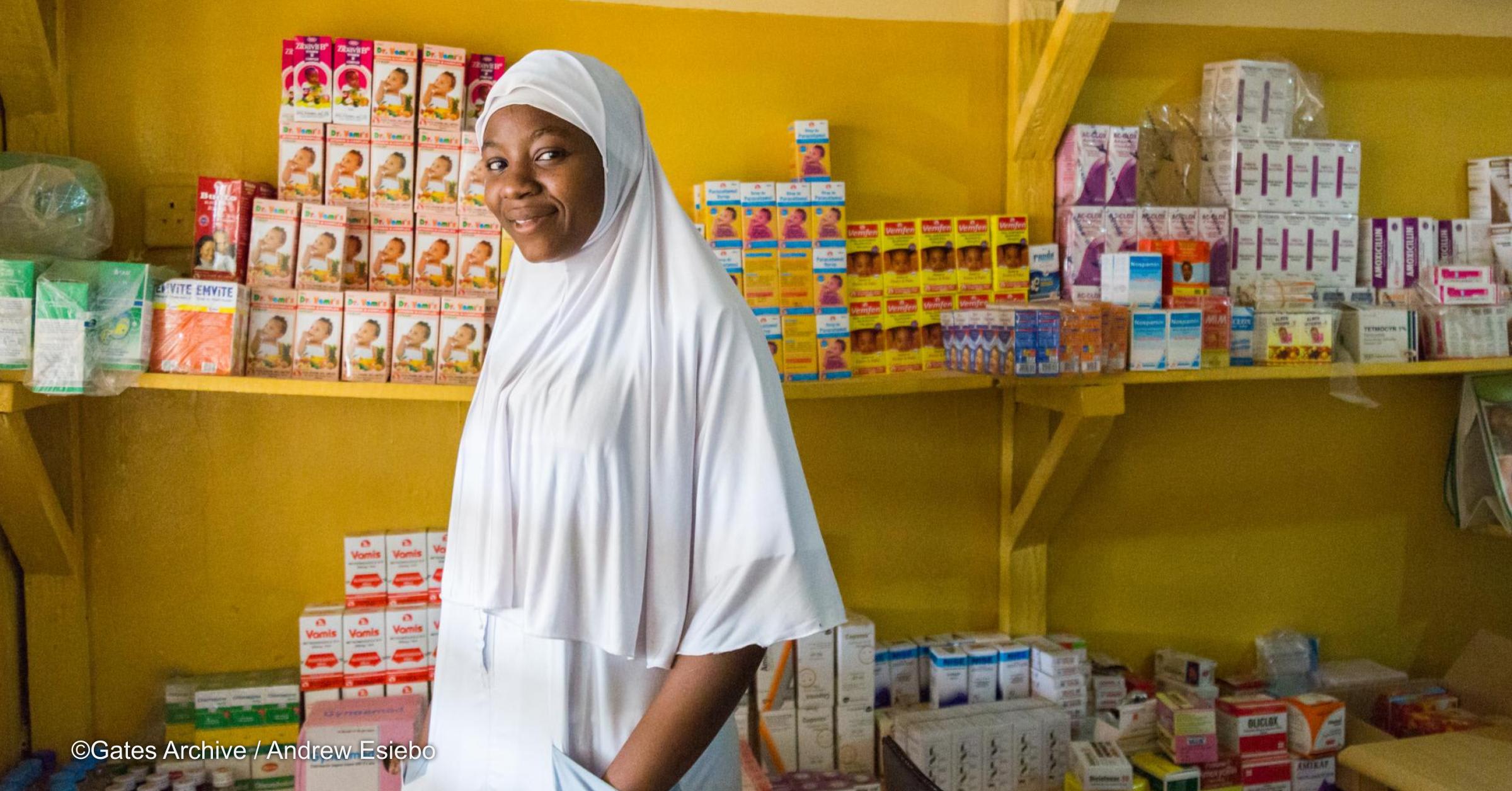A deep dive into the world’s biggest MDBs
With a call to increase their lending capacities, the biggest MDBs are ramping up efforts to reach $300 billion-$400 billion in lending headroom. Who are the biggest MDBs, and how much do they lend? Devex checked the numbers to find out.
Development funding is shifting. As donor governments reduce funding, the spotlight is now increasingly directed towards multilateral development banks, or MDBs. MDBs are development funding institutions with the common goal of improving the lives of their members through investments. The most well-known MDB is the World Bank, but there are also many others that have a significant amount of resources available. In an exclusive report for our Pro readers, Devex has provided a deep dive into the biggest MDBs as well as a brief summary of many of the smaller regional development banks. We looked at the size of the MDBs based on their total assets as reported in their latest annual reports, and also used the information provided in the banks’ respective annual reports to assess annual lending over a five-year period. A brief summary of some of the information in the report is shared below. All figures are in U.S. dollars, 2024 constant prices, unless stated otherwise. Asian Development Bank The Asian Development Bank, or ADB, is the leading development bank catering to the Asia-Pacific region. It is owned by 69 members, 50 of which are from the region. In 2018, ADB released its Strategy 2030, which set a goal of increasing its lending capacity to $100 billion within the next decade. It also aims to triple its investment in the private sector. ADB provides funding mainly through loans via its ordinary capital resources. It provides near-market terms to low- to middle-income countries while providing very low interest rates to lower-income countries. ADB also offers grants through the Asian Development Fund, which is primarily for poverty reduction and quality of life improvements. Excluding grants, ADB committed $22.1 billion in 2024, which is a slight dip from 2023, with $22.7 billion. ADB committed the most to the South Asia region with $8.9 billion, followed by southeast Asia with $6.2 billion, and then Central and West Asia with $5.6 billion. These commitments include grants and loans. Sector-wise, ADB committed the most to the finance sector with $5.9 billion, followed by the energy sector with $3.8 billion. These commitments include grants and loans. Asian Infrastructure Development Bank The Asian Infrastructure Development Bank is a relatively new multilateral bank focused on the Asia region. Its main investment priorities are in the infrastructure and production sectors. Currently, it has 110 members worldwide. Just this year, AIIB revised its corporate strategy, outlining its goal of reaching $17 billion in annual financing volume. It also has a goal of exceeding $50 billion in climate finance by the end of the decade. AIIB approvals peaked in 2020 with $12.1 billion, and dipped to a low of $7.3 billion in 2022. Then approvals rose again to $12 billion in 2023, and then dropped to $8.4 billion in 2024. In 2024, the bank approved the highest value of projects in India, worth $1.2 billion. Next is Turkey with $1.1 billion. The transport sector received the highest value of approvals, with $3.8 billion, followed by the energy sector with $1.5 billion. The urban sector follows with $535 million approved. African Development Bank The African Development Bank, or AfDB, is the leading multilateral development bank in Africa. The bank currently has 81 shareholder countries, 54 of which are African countries. The bank is primarily funded through member subscriptions, international market borrowing, and loan payments. The bank has five main funding priorities, which it calls the “High 5s”: • Light up and power Africa • Feed Africa • Industrialize Africa • Integrate Africa • Improve the quality of life for the people of Africa In 2024, the bank released a 10-year strategy, which will be in effect until 2033. This new strategy will allow the bank to invest in more high-impact projects and programs. AfDB has almost doubled its approvals over the past few years. In 2024, approvals reached almost $10 billion in loans, guarantees, and equities, compared to just $5.1 billion in 2020. At a country level, South Africa received the highest value of approvals with $1.4 billion. Nigeria follows with $881.2 million and Morocco with $614.8 million. These commitments include grants and loans. The bank approved the highest value of projects in the infrastructure sector with $3.9 billion, followed by transportation with $2.4 billion, and finance with $1.9 billion. Development Bank of Latin America and the Caribbean The Development Bank of Latin America and the Caribbean, or CAF, is a multilateral bank serving the Latin America and the Caribbean region. It currently has 23 member countries. The bank developed a strategic vision for 2026 after the shareholders approved an additional $7 billion of equity. CAF approvals saw a slight dip during the recovery period from the COVID-19 pandemic. It quickly recovered and approved $15.9 billion in 2024, up slightly from $15.3 billion in 2023. Brazil received the highest value of approvals in 2023 with $2.9 billion. This is followed by Argentina with $2.8 billion, and Peru with almost $2 billion. There is no information regarding the bank’s 2024 approvals as of writing. According to CAF’s annual report for 2023, the public administration sector received the highest value of approvals with 39.2% of the total. This is followed by the transport and telecommunications sector with 25.9%, then the education, health, and social protection sector with 18.1%. European Bank for Reconstruction and Development The European Bank for Reconstruction and Development, or EBRD, is one of the largest multilateral banks headquartered in Europe. The bank has 75 shareholders from all over the world, along with the European Union and the European Investment Bank. EBRD is unique because it operates with a political mandate. It will only provide assistance to countries committed to applying the principles of multiparty democracy and pluralism. It also has a green economy transition approach to its financing. This means that all approvals have to be aligned with the Paris Agreement. The bank has assisted Ukraine with the ongoing Russia-Ukraine conflict, providing €6.2 billion to Ukraine since the start of the conflict. EBRD provides financing through loans, guarantees, and equities. The bulk of its business lies with the private sector, which makes up around three-quarters of the financing each year. In 2024, EBRD invested in €16.6 billion worth of projects. The bank saw a steady increase in its investments over the past five years, increasing from just under €13.2 billion in 2020. Inter-American Development Bank The Inter-American Development Bank is one of the largest multilateral banks in the Latin America and Caribbean region. It has 48 member countries, 26 of which belong to the region. IDB is composed of three different entities: IDB, IDB Invest, and IDB Lab. IDB is in charge of financing the public sector, while IDB Invest focuses on the private sector. IDB Lab is focused on creating innovative ways to spur inclusive growth. IDB’s plans are outlined in its IDBStrategy+ and IDBImpact+ documents, which will serve as a guidepost for IDB’s operations until 2030. Over the past five years, the bank has seen a decline in its approvals. Approvals peaked in 2020 with almost $18 billion, and then dropped to $12.2 billion in 2024. IDB approved the most funding for projects located in Argentina, with $2.5 billion. Next comes Brazil with $2.4 billion, and then Ecuador with $1.6 billion. IDB’s financing reaches different sectors, but it invested the most in state reform and modernization, with $2.4 billion, and then social investment with $2 billion. World Bank The World Bank is the largest and best-known MDB. The bank operates via its different institutions: • International Development Association — lending arm for low-income countries. • International Bank for Reconstruction and Development — lending arm for low- to middle-income countries. • International Finance Corporation — private-sector lending arm. • Multilateral Investment Guarantee Agency — the bank’s main guarantee platform. • International Centre for Settlement of Investment Disputes — the bank’s arbitration institution. As a whole, the bank committed a total of $117.5 billion in 2024. This is a slight dip from the previous year, which was at $128.3 billion. For this analysis, we will only be looking at the two main financing arms of the World Bank: IDA and IBRD. These institutions provide financing globally through loans and grants. International Development Association IDA is the World Bank’s financing arm for low-income countries. IDA gives loans at very low interest rates along with grants. It lends money on concessional terms, with repayments stretching to 30 to 40 years. IDA gets its resources primarily from member countries. Every three years, the donors meet to review the IDA budget. The most recent replenishment happened in December 2024, where the IDA secured an additional $24 billion in donor financing. This is the biggest replenishment to date. The replenishment will allow IDA to generate $100 billion in affordable financing. This replenishment will cover the years 2025 to 2028. IDA’s commitments hit their peak in fiscal year 2021 with $41.7 billion. Of this, $27.7 billion was in the form of loans, while the remainder was grants. In fiscal year 2024, IDA commitments were at $31.2 billion, including $23.1 billion in loans. Ethiopia was the top recipient in 2024 with $3.4 billion. This was followed by Bangladesh, also with $3.4 billion, and Nigeria with $2.2 billion. Sector-wise, the energy and extractive sector received the most commitments with $5.5 billion. This is followed by public administration with $4.7 billion, and then transportation with $3.4 billion. These commitments include grants and loans. International Bank for Reconstruction and Development IBRD is the World Bank’s primary lending arm. It also engages with middle-income countries. It also provides risk-management products and advisory services. IBRD gets its money through world financial markets and equity returns. IBRD’s commitments have seen an increase over the past five years. In 2020, it committed a total of almost $34 billion, but this had risen to $37.6 billion by 2024. Ukraine is IBRD’s top recipient with $4.1 billion, followed by Turkey with $3.2 billion, Indonesia with $3 billion, India with $2.9 billion, and then the Philippines with $2.4 billion. Public administration was the most committed sector with $7.7 billion. Energy and extractives follow with $6.4 billion, and then social protection with $4.4 billion. Try out Devex Pro Funding today with a free five-day trial, and explore funding opportunities from over 850 sources in addition to our analysis and news content.
Development funding is shifting. As donor governments reduce funding, the spotlight is now increasingly directed towards multilateral development banks, or MDBs.
MDBs are development funding institutions with the common goal of improving the lives of their members through investments. The most well-known MDB is the World Bank, but there are also many others that have a significant amount of resources available.
In an exclusive report for our Pro readers, Devex has provided a deep dive into the biggest MDBs as well as a brief summary of many of the smaller regional development banks.
This article is free to read - just register or sign in
Access news, newsletters, events and more.
Join usSign inPrinting articles to share with others is a breach of our terms and conditions and copyright policy. Please use the sharing options on the left side of the article. Devex Pro members may share up to 10 articles per month using the Pro share tool ( ).
Alecsondra Si is a Junior Development Analyst at Devex. She analyzes funding data from bilateral and multilateral agencies, foundations, and other public and private donors to produce content for Devex Pro and Pro Funding readers. She has a bachelor’s degree in International Studies - major in European Studies from De La Salle University, Manila, Philippines.








